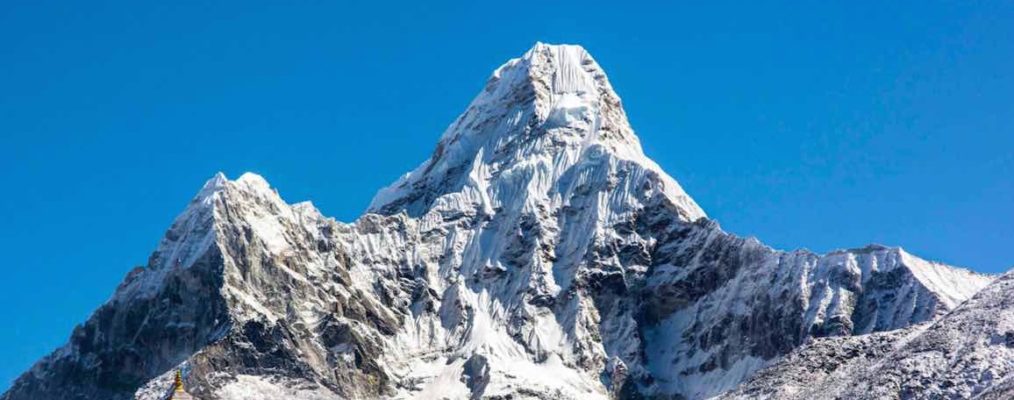Noone has commented on this article yet.
ONE OF THE WORLD'S MOST BEAUTIFUL MOUNTAINS
Often judged to be one of the world’s most beautiful mountains, Ama Dablam stands proud from its Himalayan neighbours, an austere pyramid of rock and ice. Lying on the ever-popular Everest Base Camp trekking route, it features in the holiday snaps of thousands of walkers each year, a few of whom will come back to attempt to climb it. More than 15 routes have been climbed to the summit, with all but the Southwest Ridge the preserve of highly experienced mountaineers.
Southwest Ridge
One of the most-often climbed of Nepal’s higher mountains, the vast majority of ascents are made by the Southwest Ridge. On the first ascent of the peak, an international team of Barry Bishop (US), Mike Gill (NZ) Wally Romanes (NZ) and Mike Ward (UK) climbed rock up to a British grade of HVS, as well as dealing with steep snow and ice. Modern climbers instead find fixed ropes in place, maintained by highly skilled Nepalese Sherpas working for the commercial expeditions who bring teams of clients to the route. Despite the fixed ropes reducing technical difficulties, an attempted ascent should not be underestimated.
Northwest Ridge
The last of Ama Dablam’s ridges to be climbed, more than 10 attempts were made on the Northwest Ridge before it finally fell to the strong British team of Jules Cartwright and Rich Cross. Their ascent, made over 10 days in autumn 2001, was a display of both skill and commitment earning the pair a Piolet D’or nomination. After climbing to a shoulder at 5,800m, a long traverse along a horizontal ridge, complete with committing abseils, must be made to reach the final headwall leading to the summit. At the time of writing the route remains unrepeated. Cartwright, one of the leading British alpinists of his generation, was tragically killed while approaching the Piz Badile in Switzerland, along with his client Julie Colverd.
Northeast Face
The last of the faces to be climbed, Americans Carlos Buhler and Michael Kennedy, spent eight days battling up steep ice pitches connected by long sections of challenging steep snow. Climbed during the harsh winter season, Buhler and Kennedy found that great attention had to be paid to fingers and toes to avoid frostbite.
Stane Belak Strauf Memorial Route
Hard as nails Slovenians Tomaz Humar and Vanja Furlan won a Piolet D’or for this, one of Ama Dablam’s most challenging routes. Tackling a line of difficult rock and ice on the Northwest Face,
the team spent seven days away from base camp authoring this impressive route, named in memory of their recently-deceased climbing partner.
‘Fast and Light on Ama Dablam’, by Jon Gupta (T&M issue 25, Feb 2012)
‘Call of the Khumbu’, by Bonita Norris (T&M issue 25, Feb 2012)
How to get there:
Fly into Kathmandu, the capital of Nepal, and spend a couple of days taking in the sights and buying expedition supplies. A one-hour internal flight takes you to Lukla, often unfairly dubbed the world’s most dangerous airport. From here make the five-day trek in to base camp, passing through Namche Bazaar on the way.
Outfitters:
There are numerous companies offering assistance in climbing Ama Dablam, from logistics-only packages to get you and your bags to base camp, to fully guided, all-inclusive trips to the summit. It’s possible to organise logistics directly with a Nepalese agency, or to go with a Western-led guiding company such as www.jagged-globe.co.uk who typically offer higher levels of support. Potential climbers should work out the level of support they need before researching who the best provider for them may be.
Permits:
A peak permit is required to climb on Ama Dablam, available from the Nepalese Ministry of Tourism for $400 US dollars and most easily organised with the assistance of a Nepalese agent. Other relatively inexpensive National Park and trekking permits are payable on entrance to the Khumbu Valley.






